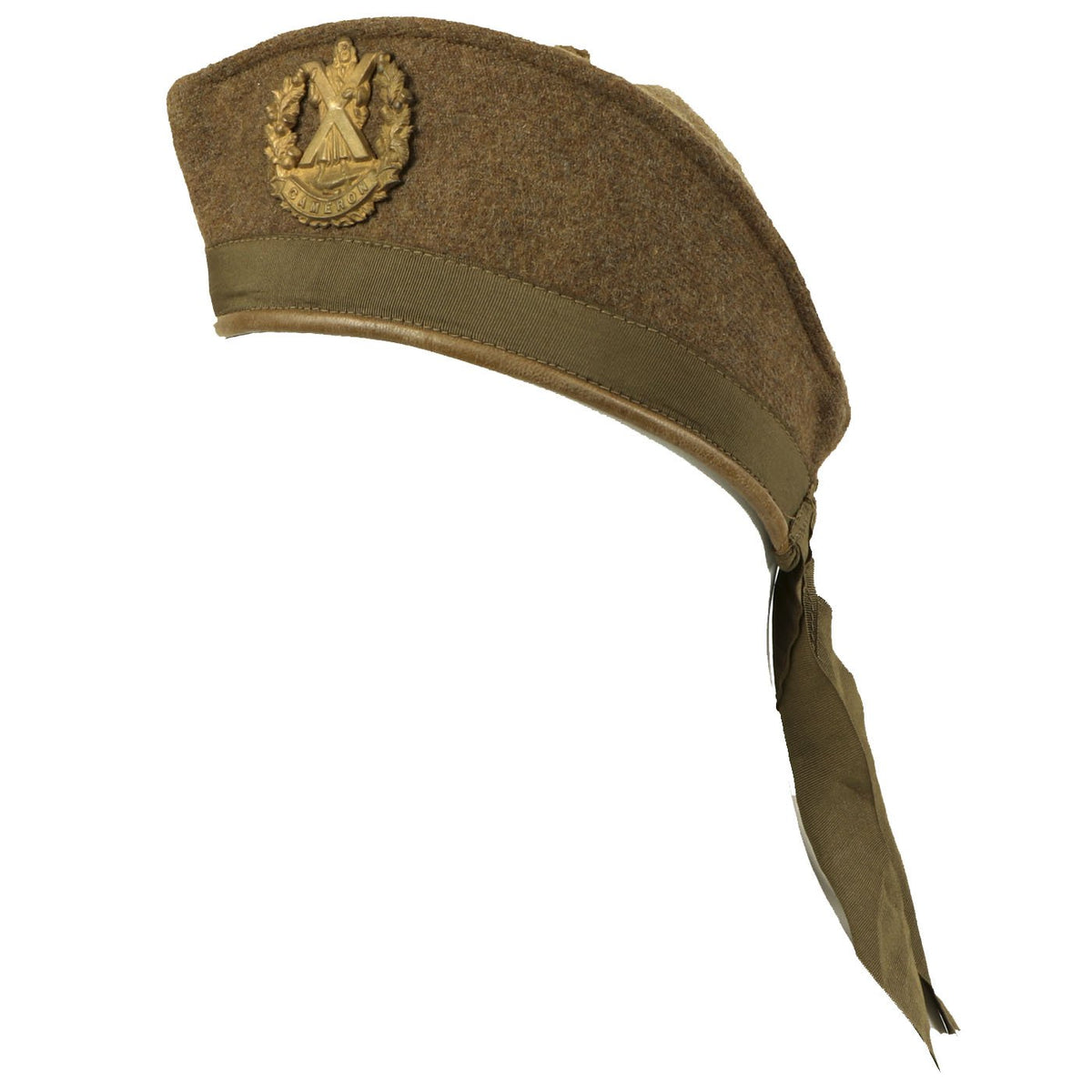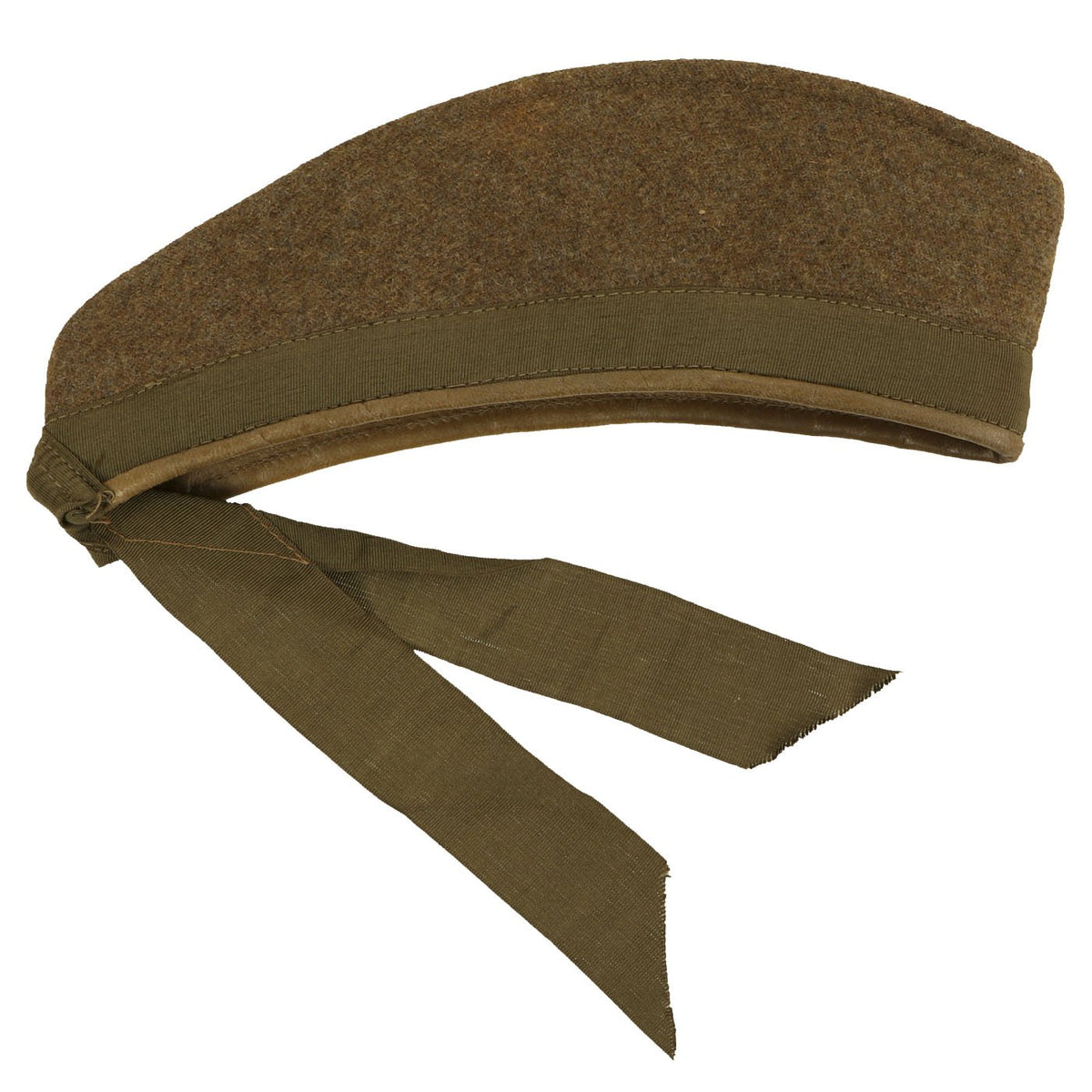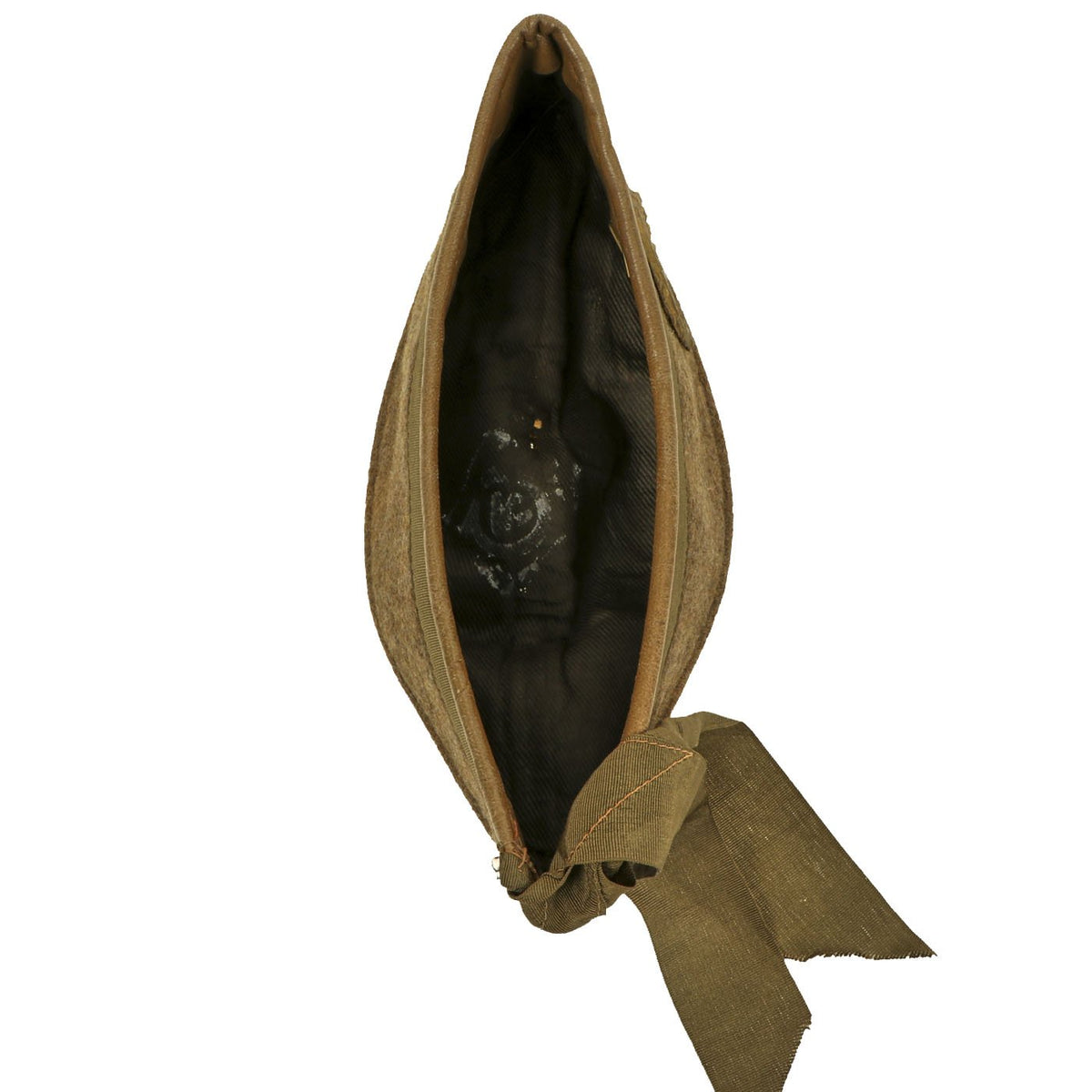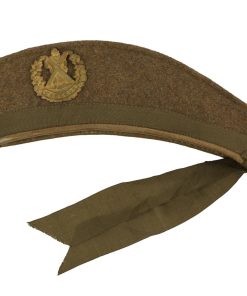Original Canadian WWI Queen’s Own Cameron Highlanders Khaki Glengarry Side Cap dated 1916 – Size 6 3/4 Original Items
$ 295,00 $ 118,00
Original Item: Only One Available. The glengarry bonnet, or side cap, is a traditional Scots cap made of thick-milled woolen material, decorated with a toorie (small pom pom) on top, frequently a rosette cockade on the left side, and ribbons hanging behind. It is normally worn as part of Scottish military or civilian Highland dress, either formal or informal, as an alternative to the Balmoral bonnet or tam o’ shanter. For many years it was the standard headgear of all highland regiments in the British Army, except for the Black Watch, who retained a blue Balmoral Bonnet.
This example is in very good condition, and was issued to the Canadian Expeditionary Force (CEF) during WWI. It still bears a nice “Broad Arrow C” Canadian proof mark, and has the complete manufacturers information and size on the interior:
ANSLEY-DINEEN
1916
HAT & FUR CO. LTD
TORONTO
6 3/4
When the Highland CEF reserve regiments were called up, they continued to use the same badges as previously, and some chose to use Khaki Glengarry caps, such as this example. It still has the correct toorie and ribbons behind, but all in a nice easily camouflaged color, which matched the field uniform of the time.
Attached to the left side is a very nice brass “Queen’s Own Cameron Highlanders” badge, showing St. Andrew, holding a cross, surrounded by a Thistle Wreath, with CAMERON on a banner at the bottom. These are the standard heraldic symbols of Scotland. During WWI the regiment used the British style badge when joining the British forces.
Very attractive, in very good condition and ready to add to your Scottish collection!
WWI Service of the The Queen’s Own Cameron Highlanders of Canada
The 79th Cameron Highlanders of Canada were placed on active service on 6 August 1914 for local protection duties. The 79th Cameron Highlanders of Canada contributed one company to the 16th Battalion (Canadian Scottish), CEF (perpetuated by the Canadian Scottish Regiment (Princess Mary’s).
The 43rd Battalion (Cameron Highlanders of Canada), CEF, which was authorized on 7 November 1914 and embarked for Great Britain on 1 June 1915. It disembarked in France on 22 February 1916, where it fought as part of the 9th Infantry Brigade, 3rd Canadian Division in France and Flanders until the end of the war. The battalion disbanded on 15 September 1920.
The 174th Battalion (Cameron Highlanders of Canada), CEF was authorized on 15 July 1916 and embarked for Great Britain on 29 April 1917. There, on 7 May 1917, its personnel were absorbed by the 14th Reserve Battalion, CEF to provide reinforcements for the Canadian Corps in the field. The battalion disbanded on 1 September 1917.
The 179th Battalion (Cameron Highlanders of Canada), CEF was authorized on 15 July 1916 and embarked for Great Britain on 3 October 1916. There, on 21 October 1916, its personnel were absorbed by the 17th Reserve Battalion, CEF to provide reinforcements for the Canadian Corps in the field. The battalion disbanded on 17 July 1917.
Fast Shipping with Professional Packaging
Thanks to our longstanding association with UPS FedEx DHL, and other major international carriers, we are able to provide a range of shipping options. Our warehouse staff is expertly trained and will wrap your products according to our exact and precise specifications. Prior to shipping, your goods will be thoroughly examined and securely secured. We ship to thousands clients each day across multiple countries. This shows how we're dedicated to be the largest retailer on the internet. Warehouses and distribution centres can be located throughout Europe as well as the USA.
Note: Orders with more than one item will be assigned a processing date depending on the item.
Before shipping before shipping, we'll conduct a thorough inspection of the items you have ordered. Today, the majority of orders will be delivered within 48 hours. The delivery time will be between 3-7 days.
Returns
The stock is dynamic and we cannot completely manage it because multiple stakeholders are involved, including our factory and warehouse. So the actual stock may alter at any time. It's possible that you may not receive your order once the order has been made.
Our policy is valid for a period of 30 days. If you don't receive the product within 30 days, we are not able to issue a refund or an exchange.
You can only return an item if it is unused and in the same state as the day you received it. You must have the item in its original packaging.
Related products
Uncategorized
Armoured Fighting Vehicles of the World: AFVs of World War One (Hardcover Book) New Made Items
Uncategorized
Uncategorized
Uncategorized
Uncategorized
Uncategorized
Uncategorized
Band of Brothers ORIGINAL GERMAN WWII Le. F.H. 18 10.5cm ARTILLERY PIECE Original Items
Uncategorized
Armored Burgonet Helmet & Polearm from Scottish Castle Leith Hall Circa 1700 Original Items
Uncategorized
Uncategorized
Uncategorized
Uncategorized
Uncategorized
Uncategorized
Uncategorized
Uncategorized
Uncategorized
Uncategorized
Australian WWII Owen MK1 Machine Carbine SMG Custom Fabricated Replica with Sling Original Items
Uncategorized












































































